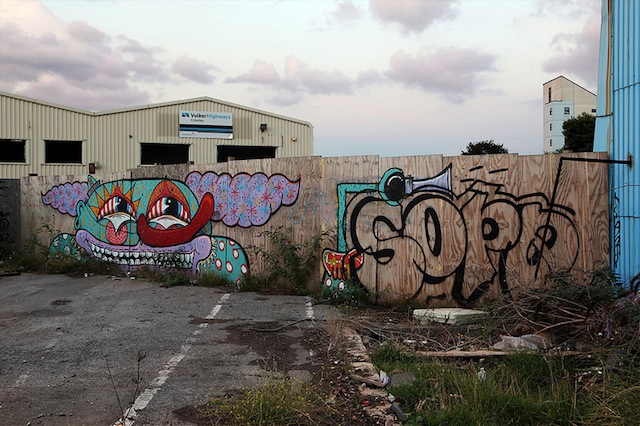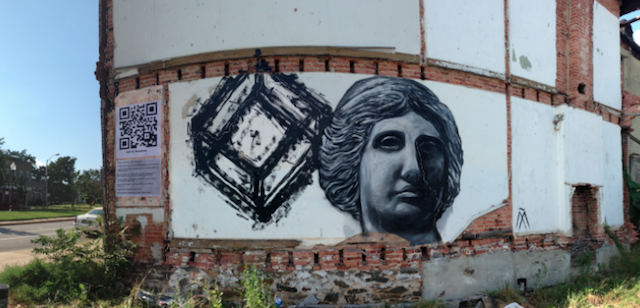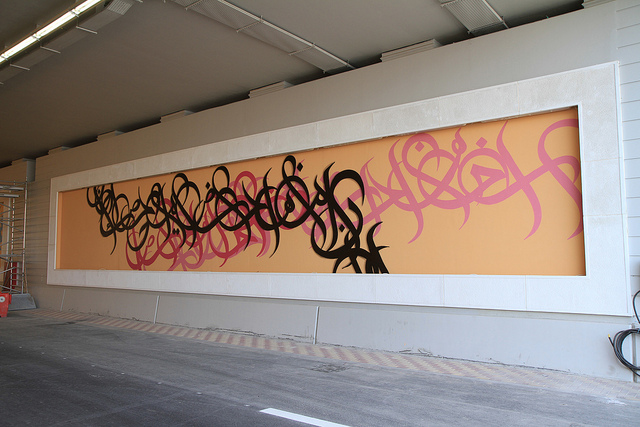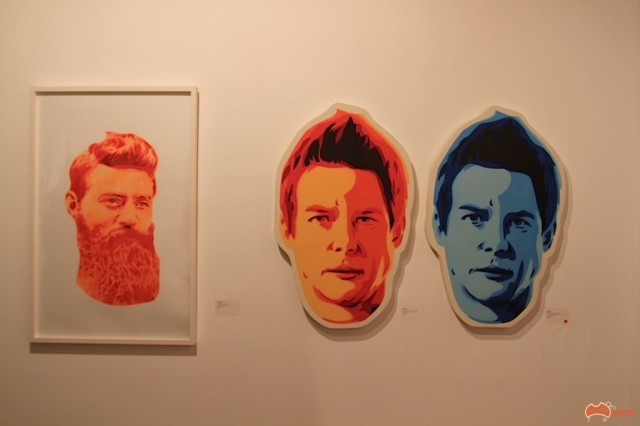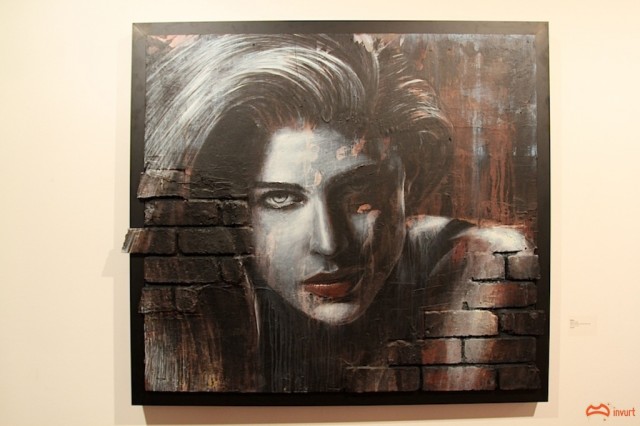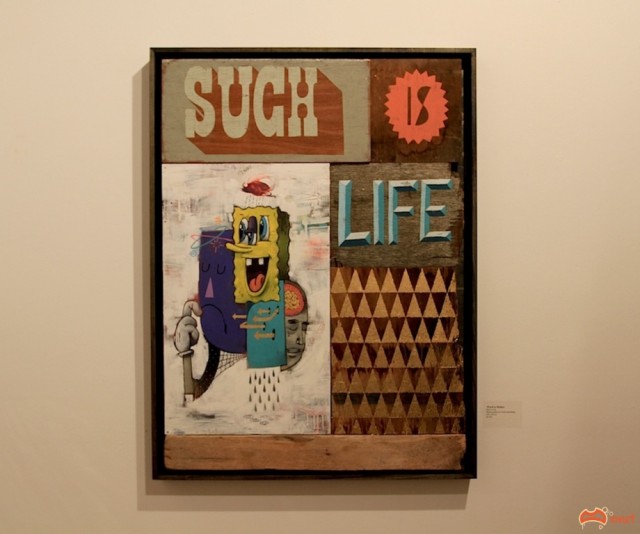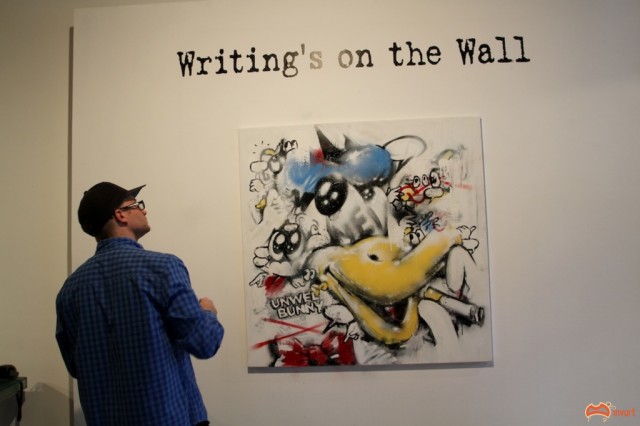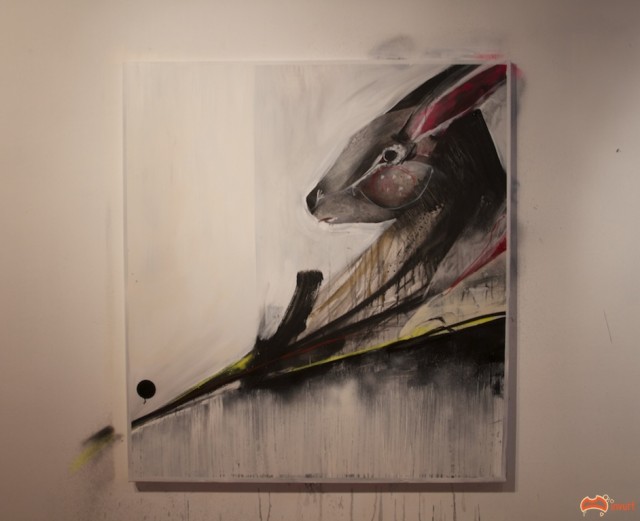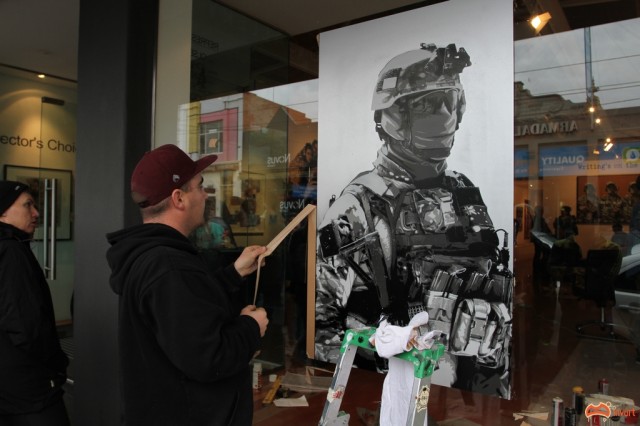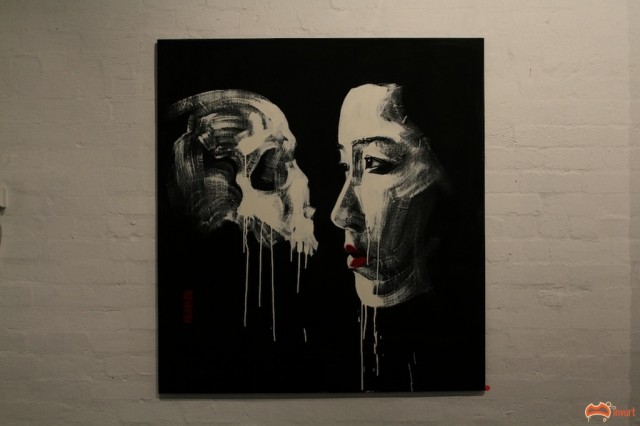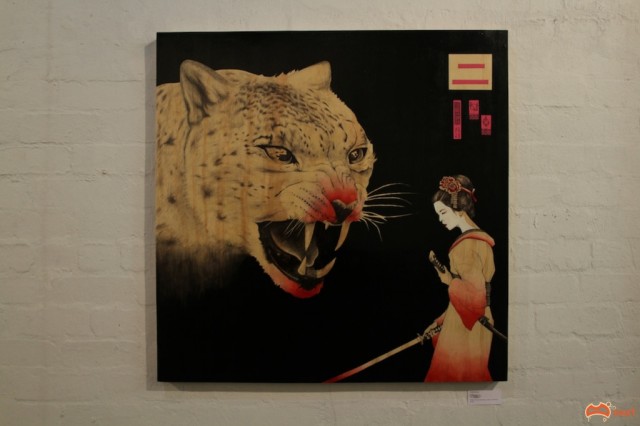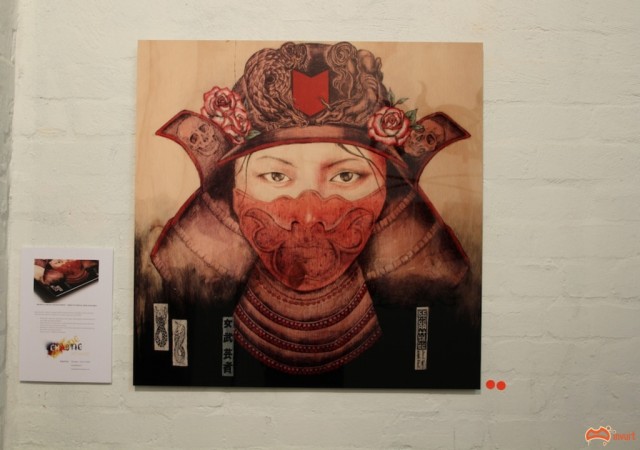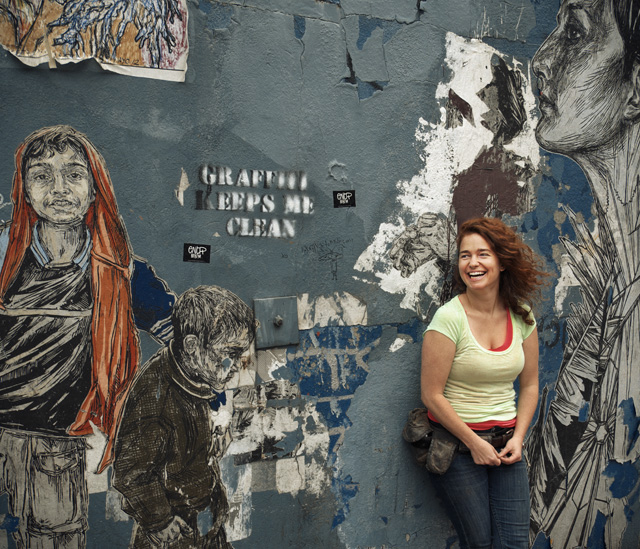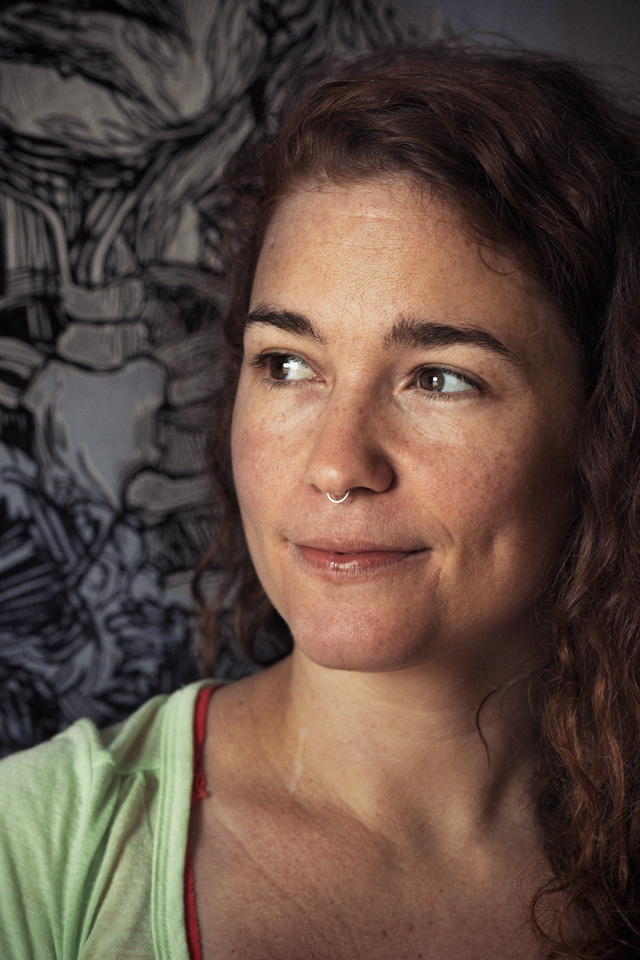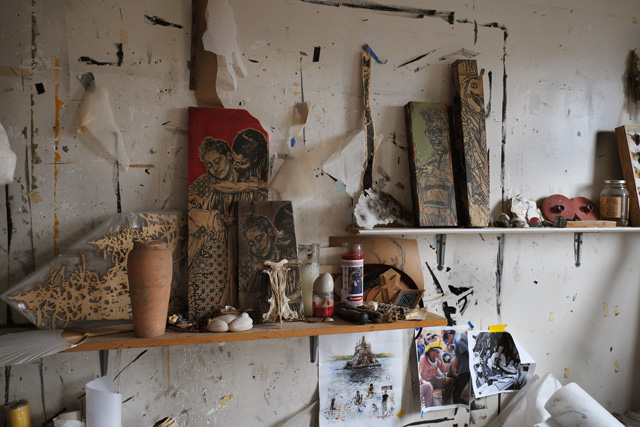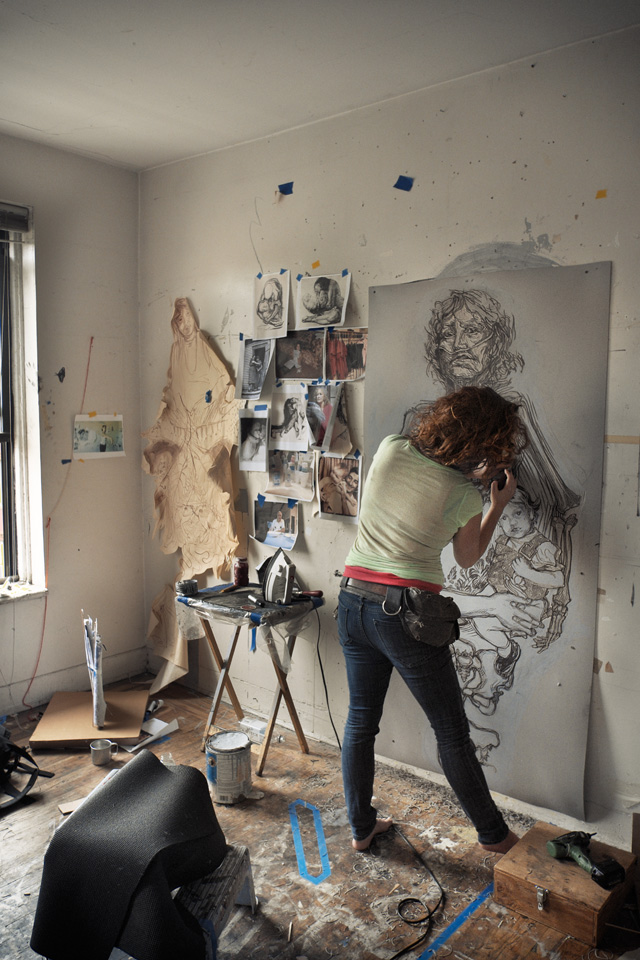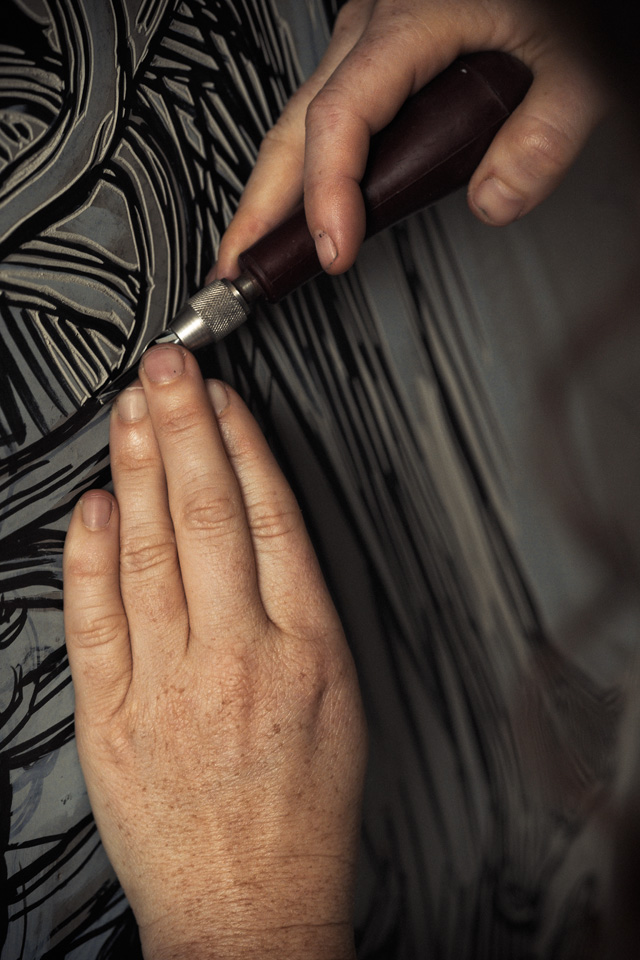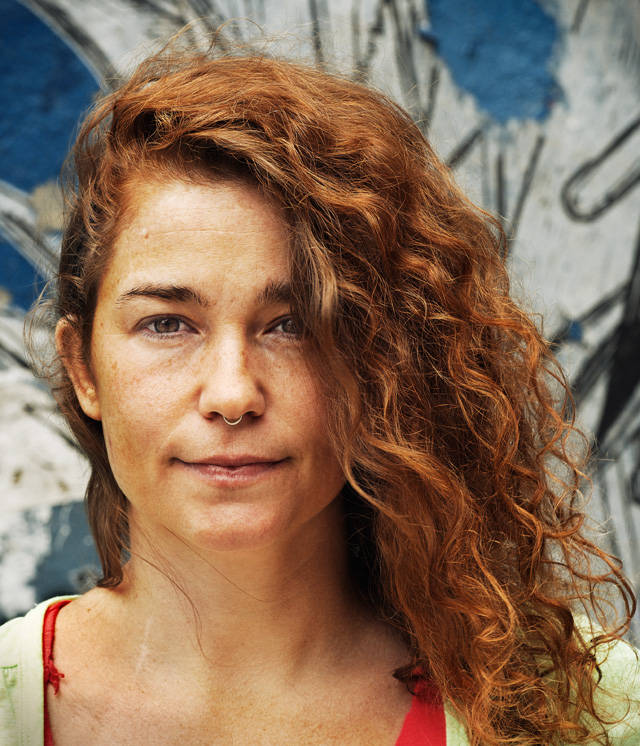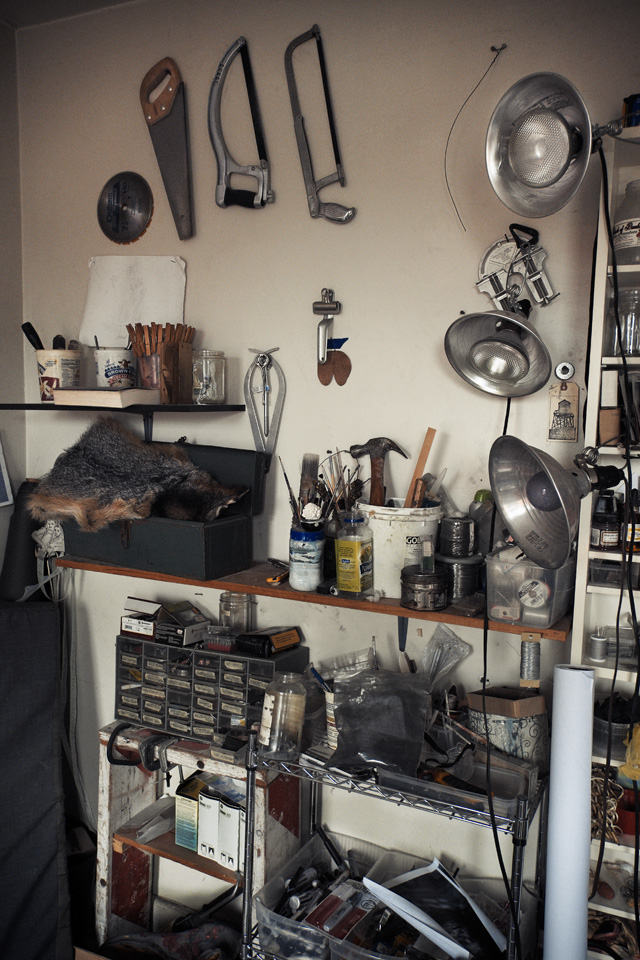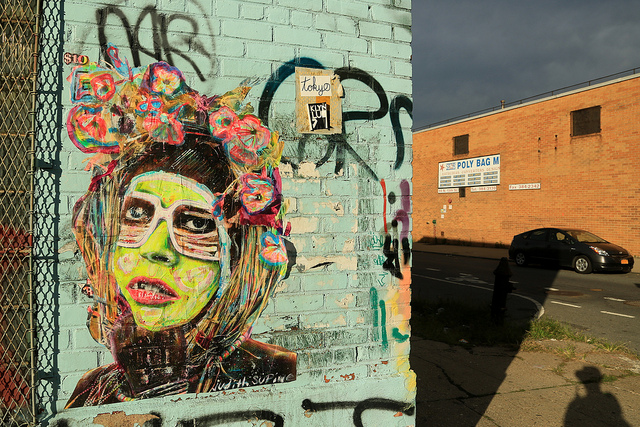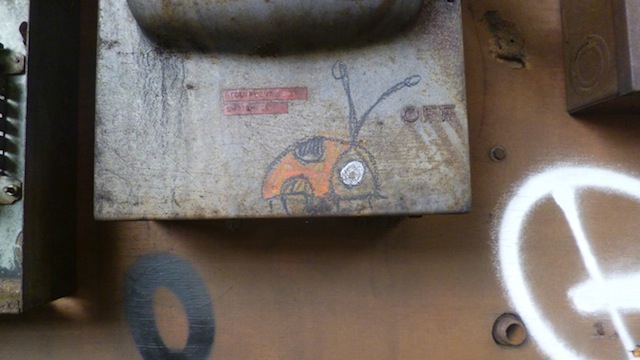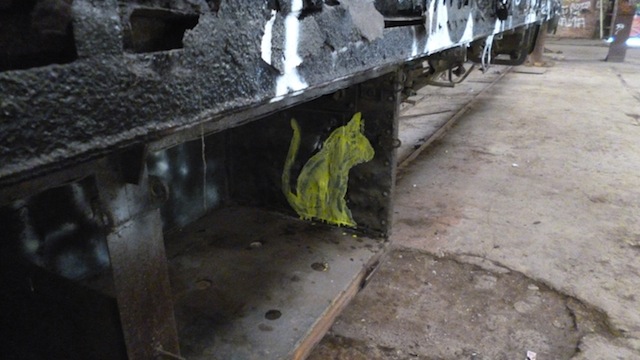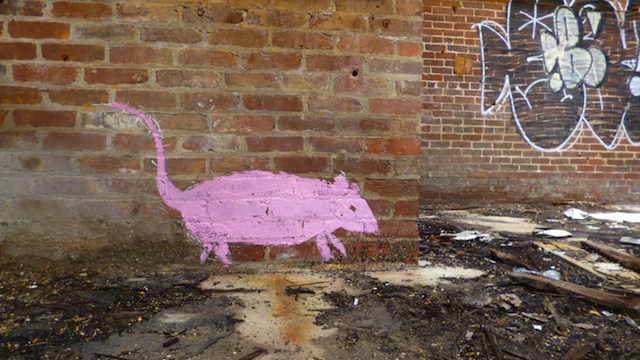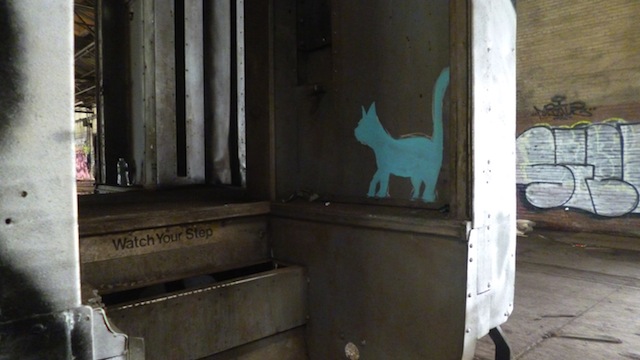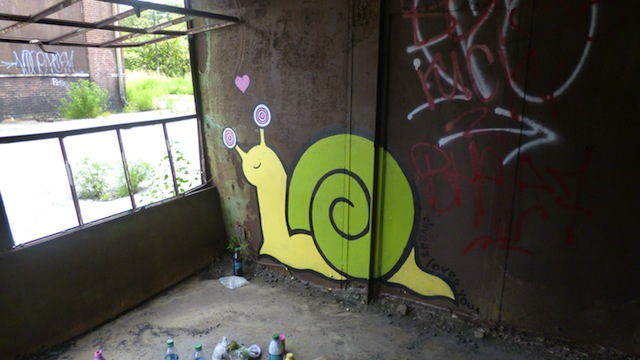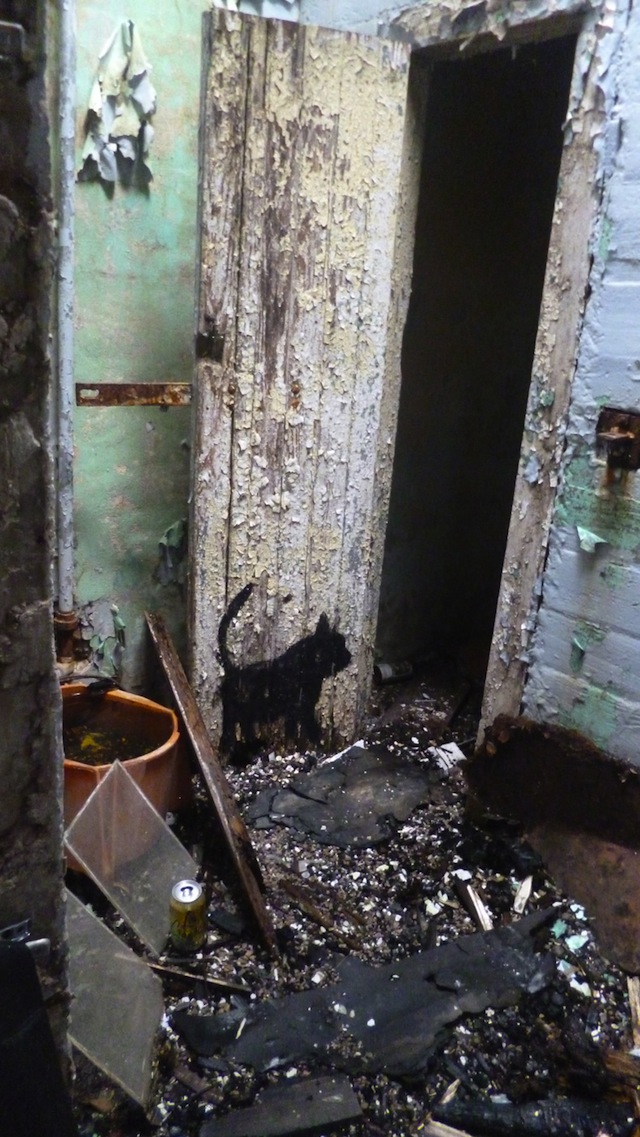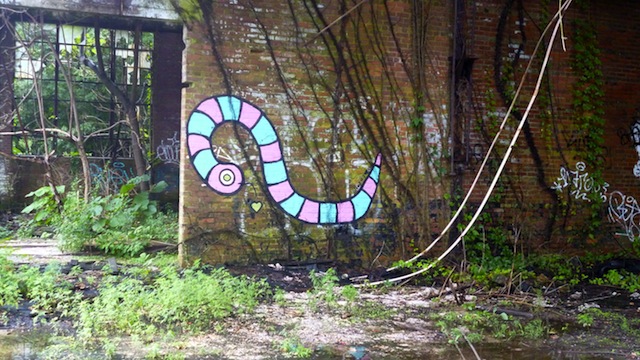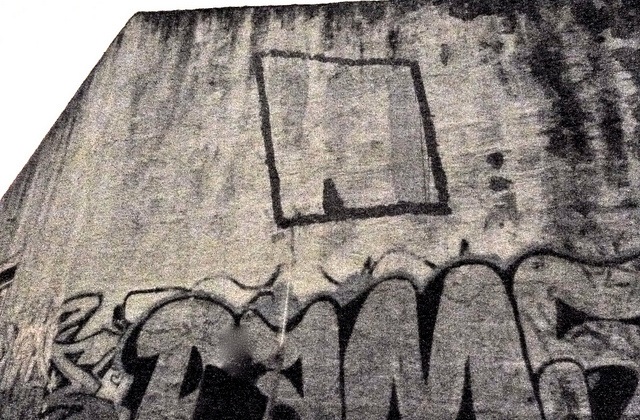
I have a confession to make: If you read Vandalog at all this August, you were taking part in an experiment, but today we are ready to publicly announce what we were doing. We nicknamed the experiment Illegal August. Look back through what we posted last month and you’ll see that we only posted about illegal work or news stories relating to illegal work from August 1st-31st. The experiment extended to our Tumblr and Facebook pages too. It was an entire month of ignoring murals, gallery shows, print releases and the VMAs on all of the general Vandalog sites (we didn’t include our personal social media accounts in the experiment, so that’s why you may have seen legal work on the Vandalog Twitter or Instagram accounts, which are really my personal accounts).
The idea for Illegal August came out of a dinner that Caroline and I had with Luna Park and Laser Burners. We were discussing mural festivals and legal murals, and how perhaps street art blogs have lost focus on street art in favor of covering a roving band of international murals touring city to city like mercenaries with spray cans, ready to paint something out of their sketchbook on any wall they can get access to, as long as they also get access to a lift. Somehow, I don’t think Luna Park actually ever said this to me, but I got the idea in my head that she had challenged Vandalog to only post about illegal work for one month. Whether she said that outright or even intended to make that challenge or not, I associate Illegal August with Luna Park. I thought it was a great idea to try only posting about illegal street art and graffiti for one month, and I chose August for the challenge/experiment because I thought that would be the most difficult month. There are so many mural festivals from July through September that I knew Vandalog would miss out posting about some great murals. It would hurt, but if it wasn’t going to hurt, what would be the point?
The rules for Illegal August were simple: Anyone posting on Vandalog from August 1st through 31st had to be reasonably confident that what they were posting about had been done without permission, or if they were posting news or an interview that the content was related to something that had been done without permission.
Illegal August morphed from a challenge into an experiment when I decided that we would attempt to complete the challenge without announcing it publicly. I wanted to see what readers would do. Would people complain that we weren’t covering Living Walls? Would they stop visiting? Would they get tired of posts featuring stickers and tags when they had come to expect murals? Would anyone notice what we were doing and ask us about it?
One way to analyze what happened is by looking at visitor numbers. In July, our most popular post by a mile was this one about a legal mural by Escif. In August, it was this post about a piece by Above that I believe to have been done illegally but I’m not positive. The Escif post got about 3x the visits as the Above post. Looking at pageviews in July versus August, we saw about a 10% drop in visitors.
But not all visits should be counted equally. Multiple posts in August inspired people to email me personally to say how much they enjoyed something that we had published. Most months, people will share what they like on Facebook or Twitter, but honestly it isn’t common for me to receive the kinds of emails I got last month. To me, that says that at least some of the people who did visit Vandalog in August were more engaged than visitors in July. I would rather know that a handful Vandalog readers are really loving the content than that a lot of people are visiting who are mostly indifferent about the content. It seems that focusing on illegal work forced myself, the rest of the Vandalog team and this month’s guest posters, to create more engaging and unique content.
What a lot of people may not realize is that a lot of what gets posted on Vandalog are things that I learn about because people email me press releases (sometimes very formal ones, sometimes entirely informal) about them. But most artists don’t send out messages to their mailing list when they put up a wheatpaste. Those emails are pretty much reserved for legal murals and gallery events. Illegal August forced me to not be so lazy. I had to go out and find content, whether that be interesting guest posts or searching through archives to highlight underrated artists. It was a lot harder than just publishing whatever was in my email inbox. But because I wasn’t worried about posting the latest murals, it freed me up to write about artists like You Go Girl! and Enzo&Nio whom I love but tend to neglect posting about. Basically, Illegal August allowed me to escape the rat race that street art blogging can be, the very existence of which is nuts since all of us bloggers are doing this out of love and a passion for the art.
But what art are we really so passionate about? I’ve always described Vandalog as a street art blog, and then there are blogs like StreetArtNews and Brooklyn Street Art with “street art” right in the name. I did a quick look at at what StreetArtNews, Wooster Collective, Brooklyn Street Art and Juxtapoz (in their “Street Art” section) posted during the week of August 19th…
- 28 out of 38 posts on StreetArtNews that week were definitely about legal work, with one post mixing legal and illegal work and 9 where I wasn’t positive if the work was painted legally or illegally.
- The only post on Wooster Collective that week was about a print release related to their 10 year anniversary show with Jonathan Levine Gallery.
- Brooklyn Street Art had 2 posts about legal work, 2 posts about work that seemed likely to be illegal, and 3 posts that had a mix of legal and illegal work.
- 13 out of 14 posts that Juxtapoz published under their “Street Art” category were entirely about legal work.
- I would guess that if Vandalog had not been in the midst of Illegal August, at least 75% of our posts for that week would have been about legal work.
Given those numbers, if you think that “street art” means art placed in public space without permission, it’s pretty clear that street art blogs are not the place to go looking for street art online. But why is that? Talk to any street art blogger and they will tell you about the awesome wheatpaste or sticker that they saw recently before mentioning the mural they posted about the night before.
Huge murals captured in the perfect light by professional photographers look great on blogs, regardless of how they look in person. Stickers and wheatpastes captured with an iPhone that look like crap on blogs can stop you in your tracks on the street. And on the street, the work is confronting you, so you’re going to look at it whether it’s Swoon or Mr. Brainwash or someone you’ve never heard of. Online, if you’re like most viewers and see a headline for a blog post along the lines of “Some guy you’ve never heard of who does wheatpastes in a city you’ve never been to,” you’re maybe not so likely to read that post. This may be one reason why street art blogs and general art and culture blogs that cover street art have shifted from covering street art to covering contemporary muralism under the guise of covering street art.
And then there is the issue of laziness that I mentioned. Well, not really laziness, but it’s just easier to post about the legal piece is sitting right in your inbox than to go out searching through flickr or actual streets (if you’re lucky enough to live near a lot of street art) in search of something brilliant but still illegal.
Or maybe street art just doesn’t mean the same thing that it once did. Maybe mural festivals and the ease of finding legal walls has elevated the genre. Artists can spend days on a mural without worrying about police rather than sneaking around at night and working as quickly as possible. With plentiful legal walls, maybe some artists don’t see the need for working illegally anymore. Can the same goals be achieved at a legal wall as at an illegal spot? I don’t think so, but some may disagree with me.
For me, Illegal August was difficult. I had to spend a lot more time than usual coming up with content, even though I asked guest bloggers to come in and help lighten the load. And it hurt. It hurt to not post about Living Walls while Caroline and I were there watching the conference happen. It hurt to not post about Tristan Eaton painting a spot that I helped to organize in Little Italy. It hurt to tell artists whose work I really like, “Sorry, no. I can’t post about this.” But Illegal August was also freeing. It made me realize when it hurt to not post something, and when I hardly cared. It allowed me to get out of posting work that I would have otherwise been on the fence about, but would have felt obligated to post because of personal ties or because all the other blogs were posting about it and not posting would make it look like Vandalog wasn’t up on the latest thing. I hope that this experiment can spark a discussion in the street art and contemporary muralism communities about how we create, promote and consume art, but on a personal level it has helped to remind me that Vandalog is about what I feel strongly about, and I need to keep the focus on that. Today Vandalog goes back to “normal,” but it won’t be unchanged.
What do you think about Illegal August? Did you notice anything different on the site? Was the experiment valuable or a waste? Are street art blogs too focused on legal walls? Has “street art” become about legal work? If so, should that change and how could it?
Photo by RJ Rushmore
